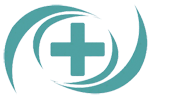Respiratory Conditions
|
Respiratory conditions refer to any disorders or illnesses that affect the lungs and airways, leading to difficulty in breathing, cough, wheezing, and chest tightness. Some of the common respiratory diseases include asthma, bronchitis, chronic obstructive pulmonary disease (COPD), and interstitial lung disease (ILD). These conditions can significantly impact the quality of life and limit the ability to perform daily activities. Rehabilitation centers play a crucial role in treating respiratory disorders by providing comprehensive care and management. We will explore the different treatments available for respiratory conditions in rehabilitation centers. Overview of Respiratory ConditionsRespiratory conditions affect millions of people worldwide and can be caused by various factors such as pollution, smoking, genetics, and infections. The most common respiratory diseases include asthma, chronic bronchitis, emphysema, pulmonary fibrosis, and lung cancer. Respiratory conditions are typically categorized into obstructive and restrictive diseases. Obstructive lung disease occurs when there is inflammation and narrowing of the airways, leading to difficulty in breathing. On the other hand, restrictive lung disease is characterized by reduced lung capacity and chest expansion, resulting in reduced airflow and oxygenation. Diagnosis and AssessmentDiagnosis of respiratory conditions involves a thorough medical evaluation, including medical history, physical examination, and diagnostic tests. The assessment may include pulmonary function tests, chest X-rays, CT scans, and blood tests. The diagnostic process helps the healthcare providers to determine the severity of the condition and develop a personalized treatment plan. The assessment may also involve identifying underlying causes such as smoking, occupational exposure, or allergies. MedicationsMedications are commonly used in the treatment of respiratory conditions to manage the underlying inflammation, improve breathing, and prevent exacerbations. The most commonly used medications include bronchodilators, corticosteroids, and anti-inflammatory agents. Bronchodilators such as Ventolin work by relaxing the muscles around the airways, while corticosteroids reduce inflammation in the lungs. If you have been diagnosed with a respiratory condition and your doctor has prescribed it, you can buy Ventolin online or from your local pharmacy. Anti-inflammatory agents such as leukotriene modifiers prevent the inflammation of airways, and immunomodulators such as Xolair target specific types of immune cells to reduce airway inflammation. These medications are usually administered through inhalers or nebulizers for immediate relief. Respiratory TherapyRespiratory therapy is a critical component of respiratory treatments in rehabilitation centers. Respiratory therapists work closely with other healthcare providers to develop a comprehensive treatment plan that includes breathing exercises, chest physiotherapy, and oxygen therapy. Breathing exercises such as pursed lip breathing and diaphragmatic breathing help to improve lung function and reduce shortness of breath. Chest physiotherapy involves various techniques such as percussion, vibration, and postural drainage, which help to clear mucus from the airways. Oxygen therapy is administered to patients with severe respiratory conditions to improve oxygenation and reduce the workload on the heart. Pulmonary RehabilitationPulmonary rehabilitation is an evidence-based program designed to help patients with respiratory conditions improve their functional capacity and quality of life. The program typically includes exercise training, education, and psychosocial support. The exercise component involves a customized plan of aerobic and strength exercises aimed at improving lung function and overall fitness. Education involves teaching patients about their condition, medications, breathing techniques, and lifestyle modifications. Psychosocial support provides patients with emotional support and coping strategies to manage their condition. SurgeryIn some cases, surgery may be necessary to treat respiratory conditions. The most common surgical procedures include lung volume reduction surgery and lung transplantation. Lung volume reduction surgery involves removing damaged or diseased lung tissue to improve lung function and reduce shortness of breath. Lung transplantation involves replacing the damaged lung with a healthy lung from a donor. These surgical procedures are typically reserved for patients with severe respiratory conditions who have not responded to other treatments. Comprehensive care and managementRespiratory conditions can significantly impact the quality of life and limit the ability to perform daily activities. Rehabilitation centers play a crucial role in treating respiratory disorders by providing comprehensive care and management. The treatments available for respiratory conditions include medications, respiratory therapy, pulmonary rehabilitation, and surgery. A personalized treatment plan that includes various components is essential to manage respiratory conditions effectively. Early diagnosis, prompt treatment, and lifestyle modifications can help to improve the symptoms and prevent complications. |

